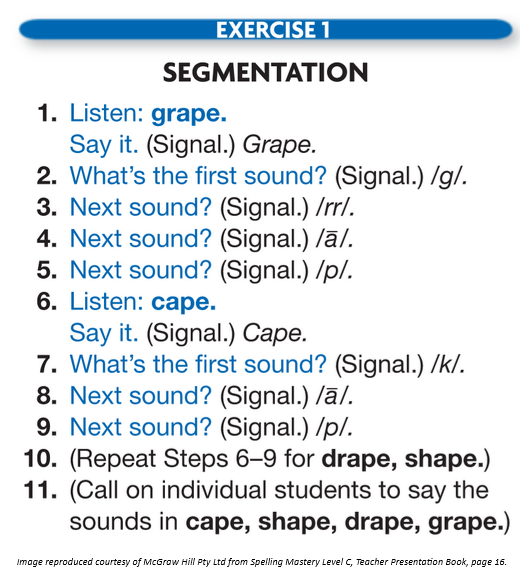Practice Use Signals
-
Module introduction2 Topics
-
Delivered With Fidelity26 Topics|2 Tests
-
Cover
-
Module Objective
-
What Happens when the Technique is Delivered with Fidelity
-
Parts of a Signal
-
Parts of a Signal Continued
-
Video: Parts of a Signal
-
Types of Signals and when they are Used
-
Video: Hand-drop Signal
-
Video: Auditory Signal
-
Video: Point-touch Signal
-
Video: Point-touch Slide Signal
-
Video: Fingers signal
-
Video: Digits Signal
-
Video: Looping Signal
-
Attention Signal
-
Using Signals Effectively
-
Allows the Teacher to Check for Mastery
-
Allows the Teacher to Check for Mastery
-
Allows Students to Actively Engage in the Lesson
-
Allows Students to Actively Engage in the Lesson
-
Video: Allows Students to Actively Engage in the Lesson
-
Provides Students with Valuable Practice
-
Provides Students with Valuable Practice
-
Check your understanding
-
Test your understanding
-
Lesson Completed
-
Cover
-
Not Delivered With Fidelity14 Topics|2 Tests
-
Cover
-
What happens when Technique is not Delivered with Fidelity
-
Not using Signals Effectively
-
Video: Not using Signals Effectively
-
Doesn’t Allow the Teacher to Check for Mastery
-
Doesn’t Allow the Teacher to Check for Mastery
-
Students do not Actively Participate in the Lesson
-
Students do not actively Participate in the Lesson
-
Video: Teacher Demonstrating Error when Signalling
-
Students do not get Adequate Practice and Confidence Drops
-
Students do not get Adequate Practice and Confidence Drops
-
Check your understanding
-
Test your understanding
-
Lesson Completed
-
Cover
-
Barriers That Impede Fidelity9 Topics|2 Tests
-
Cover
-
Barriers that Impede Delivery of the Technique with Fidelity
-
Using Deductive Logic to Identify the Cause of the Barrier
-
Not Understanding why Using Signals Effectively is Required
-
Not Understanding How to Use Signals Effectively
-
Unfamiliar with Lesson Content
-
Check your understanding
-
Test your understanding
-
Lesson Completed
-
Cover
-
Removing Barriers That Impede Fidelity12 Topics|2 Tests
-
Cover
-
Ways to Tackle Barriers so Technique is Delivered with Fidelity
-
Understand why Using Signals Effectively is Required
-
The Process
-
Learn how to Use Signals Effectively
-
The Process
-
Become Familiar with Lesson Content
-
The Process
-
Video: Practice Makes Signalling Perfect
-
Check your understanding
-
Test your understanding
-
Lesson Completed
-
Cover
-
Module evaluation survey1 Topic
Participants 521
Students do not get Adequate Practice and Confidence Drops
ddewell@goodtogreatschools.org.au August 7, 2023

Students do not get Adequate Practice and Confidence Drops
During a spelling lesson, Helena (teacher) is teaching a ‘segmentation’ exercise. She focuses student’s attention by saying, “Listen: ‘Grape’. Say it”. Helena uses the ‘hand-drop signal’ at the same time as she gives the cue. She does not allow ‘think time’ and the students become confused and hesitate. Not all students provide their individual response, “Grape” at the same time. Helena continues with the exercise. “What’s the first sound?” This time, Helena completes all parts of the signal and students respond, “g”. She then moves quickly through the remaining sounds. The timing of her signals is inconsistent, and as a result, she goes back and repeats some sounds for students. Her students are not provided with adequate practise to ensure they are firm. When Helena calls on individual students to say the sounds in the words ‘cape’, ‘shape’, and ‘drape’ during individual turns, the students are hesitant and not confident in their responses. They make mistakes, and, over time, lose confidence that they can answer correctly in front of their peers.


